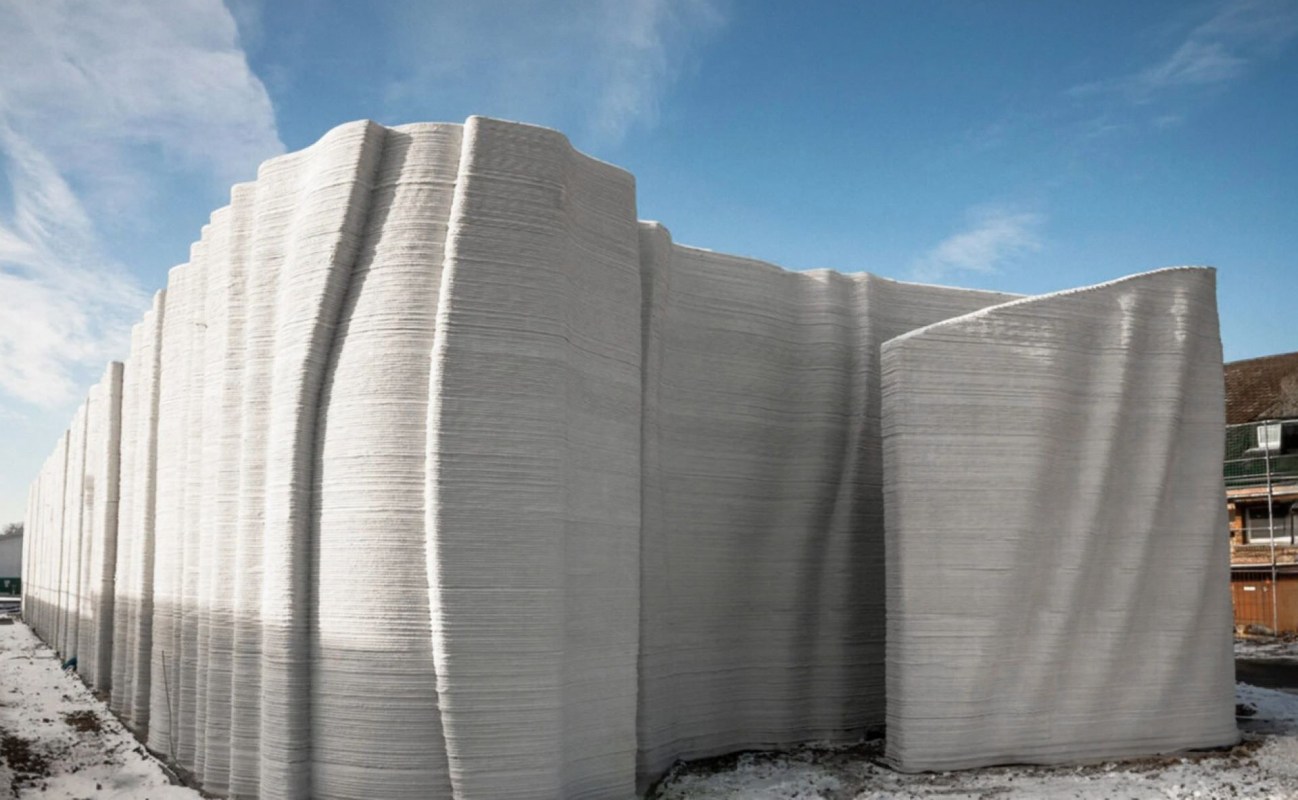A large European structure, dubbed by its creators as the Wave House, took just 140 hours to build, thanks to 3D printing technology.
It's the result of a collaboration of several firms and tech experts to build a unique, stylish cloud-computing data center in Heidelberg, Germany, the largest 3D-printed structure on the continent, according to a story by New Atlas.
In addition to a design that lives up to its ocean-themed name, the build is also another success story for the unique construction concept.
The printer, which looks like a scaffolding rig that moves across the top of the build site, lets loose a recyclable "cement-like mixture" in layers. The slurry comes out at 43 square feet per hour, forming the outside walls. The process releases "significantly less" air pollution than traditional methods, all per New Atlas.
The unique facility, at 600 square meters (about 6458 square feet), was designed by SSV and Mense Korte, printed by Peri 3D Construction for KrausGruppe, the developer.
"A challenge … in the Heidelberg project was solved by the architects … by giving the walls a wave design, a design feature that also gave name to the building: the Wave House. Such wave designed walls could not have been realized using conventional construction methods, so instead 3D construction printing technology was used due to the design freedom of this construction method," said a press release about the project, quoted by New Atlas.
A time-lapse video highlights the impressive size and maneuvering capability of the printer, showing it traveling back and forth over the structure, adding a layer of material with each pass.
The result is a building that looks fit for a Hollywood movie set, with vertical ridges, cylindrical elements, and wave-like designs. A human crew finished the roof, doors, wiring, and some other parts of the build.
Standard materials used to construct buildings generate about 9% of global air pollution. What's more, "raw resource use" is forecast to double by 2060. Steel, concrete, and cement are among the building elements noted in a United Nations report on the sector's impact on planet overheating.
Other concepts being developed to clean up some of the pollution from the construction sector include a cement alternative made from fungus, called mycocrete. And in the United States, 3D-printed communities are growing, utilizing the efficiency of the tech.
The innovations are important in more ways than one. By reducing planet-warming air pollution, we can improve sustainability for our food system, as climate-worsened storms, droughts, and other weather patterns are impacting the agriculture sector, including food prices.
Unique 3D-printed buildings like the Wave House could become a more standard part of efforts to quickly and sustainably construct buildings. For typically utilitarian structures like data centers, the result can even be a bit artistic.
"The trend toward making data centers more in the vicinity of the users and therefore locate them in suburban areas and cities has created a need to make the data centers more visually appealing," New Atlas reported, quoting the press release on the project.
Join our free newsletter for weekly updates on the coolest innovations improving our lives and saving our planet.









